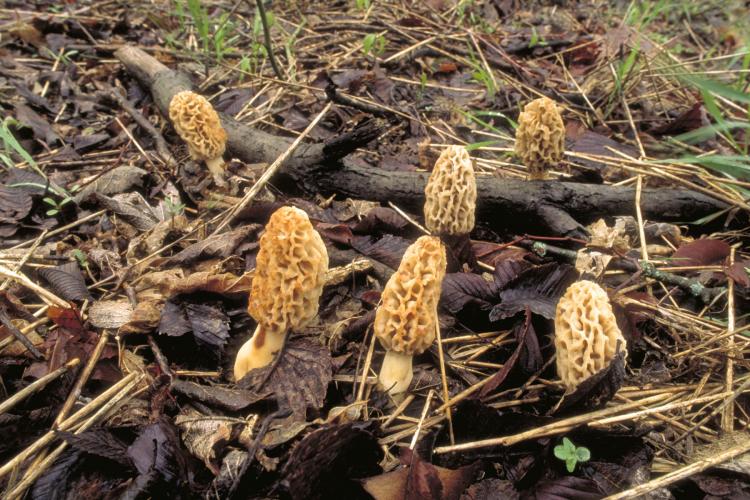April showers bring… mushrooms?
April showers and warm nights make morels (muh-rells) grow and send folks to their favorite mushroom-hunting spots.
In late spring, watch for morels growing on the ground. The top or cap looks something like a sponge, with a shape similar to a tiny Christmas tree. The stem is thick, and when sliced, the whole mushroom is hollow. Three species are commonly found in our area, so morels will vary in color from gray to tan or yellow. They come in a variety of sizes, but most average three to four inches tall.
Like all mushrooms, morels are a fungus; and the part we pick is just the fruit, so to speak. The main structure grows underground, a net of fibers that lives on decaying leaves and wood. Morels seem to pop up overnight! They usually grow in 24 to 48 hours. Look for morels in moist woods, river bottoms, and on south-facing slopes. They’re often found near dead elm trees, in old orchards or burned areas.
As with any wild edible, be sure you can identify morels before eating them. Either tag along behind an experienced morel hunter or take a good reference book along on your hunt.
The How-to’s of Mushroom Hunting
- Look for mushrooms from early spring (morels) to late fall (oysters and lion’s mane).
- Morels have a short, specific growing season of just several weeks in spring, while oyster mushrooms can be found from spring clear through to the beginning of winter—if weather conditions aren’t too harsh.
- There is no test to determine edible versus poisonous mushrooms. Ignore any advice such as “a poisonous mushroom will tarnish a silver spoon,” “if it bruises blue, it’s poisonous,” etc. These are old wives’ tales and folk myths, and completely untrue. Even seeing evidence of animals eating them won’t work here.
- The only way to tell if a mushroom is edible is by positive identification.
- If you’re not 100 percent positive of the ID, don’t eat it! When in doubt, throw it out.
For more on mushrooms, check out MDC’s Field Guide.




Recent Posts
























